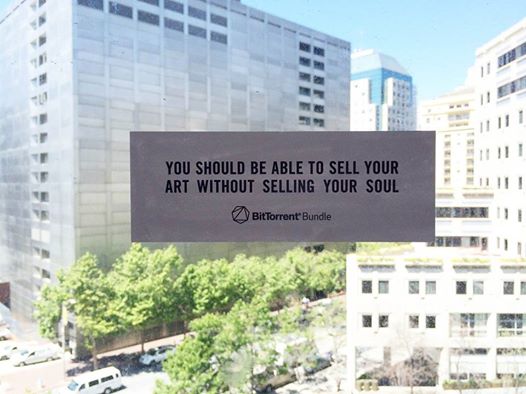How to Save Indie Film Distribution: An Interview With Drafthouse Films

A short interview with Evan Husney.
2014 started with a referendum on the indie film industry. The New York Times called for an end to overproduction. Salon called independent film America’s next Wal-Mart. The problem with the movies in the digital age, we’re increasingly told, is that there are too many of them.
It sounds like the first-world-y-ist first world problem. But it’s real. Technology has ushered in an era of unprecedented abundance when it comes to creative goods. 7,500 films were made last year. The average American will only ever see one hundred of them — and only ten of those will be indies. Will oversupply end independent film?
It will change it. It’s inevitable that movie distribution in the post-digital age will look different. It’s possible that it might look something like Drafthouse Films.
Alamo Drafthouse started out in Austin: a single theater, reclaimed. Today, it’s grown up and grown into 19 theaters across the US; with new cinemas opening this year in San Francisco and New York. And it’s also morphed into something wholly different: a predictor, maybe, of what’s to come in indie. From a single cinema storefront, to a cross-country chain, to a distributor: Drafthouse is now home to a catalogue of titles that together comprise some of film’s most challenging works. They’re not just surviving digital upheaval. They’re thriving.
In March, we sat down with Evan Husney, Drafthouse’s Creative Director, and talked about indie film’s awesome future. We can preserve the independent lens. Here’s how.
https://www.youtube.com/watch?v=8idGZEH78RM
1. Rebuild the arthouse. Rebuild the record store.
There’s a common complaint about Hollywood in the digital age: studios should be more like startups. For Husney, inspiration is old, dusty, and offline. Independent distributors should be more like local theaters; more like record stores, more like eccentric labels. They should evoke these places. They should evoke curation. Each title in the catalogue becomes both proof of the company’s vision, but also (importantly): an ad campaign for the next feature.
Drafthouse was founded essentially to approach film distribution from a curatorial standpoint. The theater-side is rooted in curation and film programming: we wanted to bring that same aesthetic to the distribution space.
We release films that are acclaimed on the merits of being a “good film”. The goal is that if one person likes that movie, they’ll immediately understand that the rest of the catalogue is going to be films selected on the same criteria. That’s the brand we want to build. The one where people look back at the last thirty releases and go: Wow. All those were really strong films. And we want to own them all.

The success of that catalogue hinges on audience understanding. Drafthouse isn’t designed for a demo — everyone from 18 to 54s. It’s designed for a mindset; a specific, small tribe of cinephiles who invest more in film, and influence more of social film’s big conversations.
It’s important for distributors to behave like brands; like indie record labels. For us, it’s really important. We are a cinephile label. We are a label that is geared towards people who are very enthusiastic about film; whose tastes aren’t defined by one genre. We’re for the people who want to be blown away by various forms of cinema.
2. Start with the people. Not the film.
For Husney, one of the biggest opportunities in independent film is redefining the word audience; away from viewership, and towards participation. This requires building a film with — and for — an audience; starting on day one. A successful film idea is one that’s social at its core.
If I was an indie filmmaker making a micro-budgeted film, I’d definitely be thinking about what I can do with this film from the very beginning. What I can build an audience around?
I would strive to make a film that has an audience first. And then, as I was going along with it, try to figure out how I can build that audience from before the first day we shoot. We need to move into a model where we’re carrying film fans from the very beginning, to the very end; finding interesting ways to interact with them — with content — all the way through a production.
3. Make content marketing more efficient.
A film is a perfect, contained universe. And it’s more: a life’s work, compressed down into under two hours; the start of ten or ten thousand conversations. The stuff that’s bigger than what we see on screen: it already exists. You’ve shot and logged it. You have your campaign. In a world where emotion and in-the-know-ness drive content virality, context is advertising.

That strategy was at the core of Drafthouse’s 2013 marketing push for The Act of Killing. The film takes on the issue of genocide and retribution in Indonesia. To drive awareness for the film, Drafthouse relied on delivering critical context: making the film’s research, interviews, and media coverage available to all using BitTorrent. They spent $0 on creative and media. They reached more than 4.4 million people.
For us, the biggest issue became: how can we get this film out to the widest possible audience? On paper, The Act of Killing is a very esoteric, sort of exotic subject to most Westerners. It’s also not a historical documentary. It doesn’t really dive into the events of fifty years ago. It leaves all this information on the table.
We wanted to take that, and translate that, and create the most intrigue that we possibly could. It became about distributing these truth-is-stranger-than-fiction materials out in the public. Bundle was the perfect vehicle to get it to a wide audience.
3. Find the communities where access to the film has the most impact.
Drafthouse started out a single theater. And today, they hold on to some piece of that. Micro-distribution is part of what made The Act of Killing’s marketing campaign so compelling. It was made available for free to the community impacted by the film. Giving away The Act of Killing in Indonesia drove digital sales in the West; sparking new conversations about the film’s role in culture.
We wanted to get this movie out to Indonesians in Indonesia, because we knew that provoking any sort of response out of Indonesia would be tremendously important — to our efforts here, but also to the film. Because this film has the power to spark change in this country. And that’s what we were really interested in. We partnered with Vice and VHX, and created this campaign to release the film digitally for free in Indonesia. It was largely successful, and helped drive a lot more awareness for the film.

4. Build a distribution model that amplifies the story behind the film.
For Husney, the best part about the shifting distribution landscape is its newfound flexibility. Drafthouse’s approach to distribution is inherently linked to each film’s story. The channel itself becomes the message; driving understanding among new audiences.
Our goal is to find new ways to build audiences around films; to find ways to get provocative films out there in different and unique ways. Every film is completely different. What’s really exciting is to look at a film, and be like: what’s best for this movie?
Maybe it’s not a lot of these models that you usually see, like ultra VOD, or theatrical. It’s kind of Maybe it’s partnering with other people who are passionate about what you’re doing. There are different companies that can bring some aspect to it that maybe contextualizes the film. We need to look at new ways to build audiences for the films that otherwise wouldn’t have them.

5. Reclaim offline distribution.
We spend a lot of time thinking about how stories play out on screens; the shift to online viewing, and what it means for film. Maybe we’re looking for signs of film’s future in the wrong place. According to Drafthouse, it’s offline. What if we stripped screenings from their theaters context, and instead, embedded them into relevant culture?
One of the things we did to promote The Act of Killing was project the film on the face of the World Bank in DC. The World Bank had given $30 billion to the regime that had committed the genocide documented in the film. This was the week before the Oscars. We’re inspired by screenings in provocative places.
Evan Husney is currently a Senior Creative at VICE.
Read more about Drafthouse’s BitTorrent experiment here.
Download more from Drafthouse Films.







